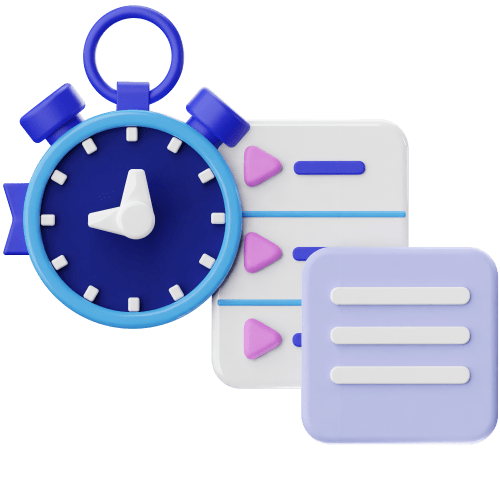Paid sick leave laws by state — Guide for 2023
It should be no surprise that most people go to work when they’re fighting through a cold or a harmless illness. In fact, according to a StudyFinds results, three in four employees feel an obligation to go to work ill, while 42% of employees go to work so as to not be seen as unreliable.
In the US, federal law does not require employers to provide paid sick leave to its employees by any regulations.
Federal regulations require an unpaid leave of absence to address minor illnesses, but how are workers supposed to support themselves during times of sickness?
Well luckily, many US states have incorporated their own paid sick leave programs that we’re about to share with you in this text.
Furthermore, most US employers offer additional benefits as a method of boosting employee morale and affecting productivity. Learn all about paid sick leave in each US state and:
- Who’s eligible to receive paid leave,
- What are qualifying reasons for taking paid sick leave, and
- What questions bug both employees and employers regarding paid sick leave.

Table of Contents
What is paid sick leave?
Paid sick leave is a paid time off work, authentic to each US state. Employees may choose to use it according to employers’ regulations without losing days’ wages to tend to their illnesses.
You should not confuse paid/unpaid sick leave with the Family and Medical Leave Act (FMLA) — a labor law requiring employers to provide unpaid leave of absence to their employees for qualifying reasons.
Moreover, FMLA is a federal law that protects employees across all US states and territories, while sick leave is a law that not all states have incorporated into their legislation, let alone paid sick leave.
Some of the reasons for providing unpaid sick leave under FMLA may include:
- Caring for a sick family member,
- Maternity/paternity leave following the year from the birth/adoption/foster care of a child,
- Diseases preventing employees from working,
- Taking care of the household while a family member is on military duty, and others.
To receive FMLA benefits, an employee had to have:
- Worked for the employer for at least a year,
- Booked at least 1,250 work hours, and
- Worked at the location with at least 50 employed workers within 75 miles.
On the other hand, federal regulations regarding sick leave state that no employer is required to offer a paid leave of absence.
If they choose to do so, however, they are obliged to compose a set of regulations and policies that are legitimate and contractualized.
The Healthy Families Act
Aside from the FMLA regulations, the US government has been making strides towards legislating The Healthy Families Act — a bill first introduced in 2004 that serves to establish a mandate of at least 7 paid sick days (56 hours) a year for underprivileged workers.
For the last two decades, the bill has been hugely publicized and supported by many congressmen and congresswomen.
Furthermore, the Obama Administration has testified in support of the bill in recent years, and it’s been on standby since 2021, waiting to be introduced to federal law, if possible.
🎓 Clockify Pro Tip
If you’ve taken some time off work due to illness or tending to loved ones, your employer will want to keep track of both your accruals and sick days. Read more about taking time off on the following page:
Paid sick leave by state
Since not many US states offer paid sick leave privileges, the following table will only contain the information regarding US states and areas that obligates employers to offer paid sick time benefits by state laws.
Up next, we’ll talk about:
- Who is covered and who is not,
- Qualifying reasons to take paid sick leave,
- Maximum accruals per year, and
- Maximum usage per year.
Let’s dig in for more info.
| State | Eligible employers & employees | Qualifying reasons for taking paid sick leave | Max accrual per year | Max usage per year |
|---|---|---|---|---|
| Arizona | All employers and employees are covered. | – Caring for a family member with an illness (mental or physical), or a condition, – Recovery time for injuries, – Psychological counseling, – Relocation, legal procedures, and recovery due to domestic violence, etc. | 1 hour for every 30 hours worked. | If the business has more than 15 employees, the employee can use up to 40 hours of paid sick time a year. If the business has less than 15 employees, the employee can accrue up to 24 hours of paid sick time a year. |
| California | Employers are obligated to provide paid sick leave to employees that have worked for them at least 30 days in a calendar year and vice versa. | – To recover from physical/mental illness or injury, – To seek medical diagnosis, treatment, or preventative care, – To care for a family member who is ill or needs medical diagnosis, treatment, or preventative care. | 1 hour for every 30 hours worked capping at 48 hours (or 6 days). | Employees can use up to 24 hours of annual accrued days. |
| Colorado | Employees that work at businesses that employ at least 16 workers are entitled to a paid sick leave. | – Any mental or physical illness, injury, or condition that interferes with their ability to work, – A need to get a diagnosis, care, or treatments for these types of conditions, – A need for preventive care, including vaccination, – Domestic violence, sexual assault, or harassment, and – Caring for family members with any of the listed conditions or needs. | 1 hour for every 30 hours worked. | Employees can use up to 48 hours of paid sick time. Furthermore, an additional 48-hour accrual can be carried over to the following calendar year. |
| Connecticut | Employees that work at businesses that employ at least 50 workers are entitled to a paid sick leave. | – Serious health conditions, – Taking care of a close family member in a serious health condition, and – Taking care of a newborn or an adopted newborn child. | 1 hour for every 40 hours worked. | Employees can use up to 40 hours of paid sick time a year. Furthermore, an additional 40-hour accrual can be carried over to the following calendar year. |
| Maine | Maine employees who work at businesses with more than 10 employees are entitled to a paid sick leave. Employers are not obligated to provide a paid sick leave until the employee has worked at least 120 days in their establishment. | – Mental or physical illness, injury or health condition, – Medical diagnosis, care or treatment of the employee’s mental or physical illness, injury or health condition, – Preventative medical care, – If an employee or a family member is a victim of domestic violence or sexual assault, – Medical care or psychological or other counseling for physical or psychological injury or disability, – Obtaining services from a victim services organization, and – Relocating due to domestic violence or sexual assault. | 1 hour for every 40 hours worked. | Employees can use up to 40 hours of paid sick time a year. Furthermore, an additional 40-hour accrual can be carried over to the following calendar year. |
| Maryland | Employees that work at businesses that employ at least 15 workers are entitled to a paid sick leave. Furthermore, employees must work at least 12 hours per week to be eligible. | – Healing from an injury, whether mental or physical, – Caring for a family member with an injury or condition, whether mental or physical, – Obtaining preventative medical care for themselves or a family member, and – Parental leave for the birth or adoption of a child. | 1 hour for every 30 hours worked capping at 40 hours per year. | Employees can use up to 64 hours of paid sick time a year. |
| Massachusetts | Employers with 11 or more employees must provide 40 hours of paid sick time. If the business employs less than 11 employees, the sick leave is unpaid. Full-time, part-time, seasonal, per-diem, or temporary workers are all eligible to receive paid sick leave. | – Serious health conditions, – Taking care of a close family member in a serious health condition, and – Taking care of a newborn or an adopted newborn child. | 1 hour for every 30 hours worked capping at 40 hours per year. | Employees can use up to 40 hours of paid sick time a year. |
| Michigan | Employees that work at businesses that employ at least 50 workers are entitled to a paid sick leave. | – The employee or a member of their family is affected by a physical or mental illness or condition, – The employee or their family member is in the process of diagnosis or treatment of a medical condition, and – The employee needs to take care of their children, due to child care facilities or schools being closed in a public health emergency. | 1 hour for every 35 hours worked capping at 40 hours per year. | Employees can use up to 40 hours paid sick time. |
| Nevada | Limited solely to the private sector; Employees that work at businesses established at least 2 years prior are eligible for paid sick leave. | Any reason. | 0.01923 hours of paid sick leave per 1 hour worked. | Employees’ sick leave usage can be capped at 40 hours per year by the employer. |
| New Jersey | All employers and employees are covered, referring to businesses with no less than 50 employees. Otherwise, the leave is not paid. | – To recover from physical/mental illness or injury, – To seek medical diagnosis, treatment, or preventative care, – To care for a family member who is ill or needs medical diagnosis, treatment, or preventative care, – To attend school-related events, – To care for a family member (or oneself) in case of a domestic or sexual violence event. | 1 hour for every 30 hours worked. | Employees can use up to 40 hours of paid sick time a year. |
| New Mexico | All employers and employees are covered. | – To recover from physical/mental illness or injury, – To seek medical diagnosis, treatment, or preventative care, – To care for a family member who is ill or needs medical diagnosis, treatment, or preventative care. | 1 hour for every 30 hours worked. | Employees can use up to 64 hours paid sick time a year. Furthermore, employees can carry over unused days to the following calendar year. |
| New York | If the employers own a business with 5 or more employees and the business has an income of $1 million or more, the employers are required to provide paid sick leave — all employees are covered. | – To recover from physical/mental illness or injury, – To seek medical diagnosis, treatment, or preventative care, – To care for a family member who is ill or needs medical diagnosis, treatment, or preventative care. | 1 hour for every 30 hours worked. | Employees can use up to 56 hours for annual accrued days. |
| Oregon | If the employers own a business with 10 or more employees, the employers are required to provide paid sick leave. If the number is less than 10, the sick leave is not paid for. | – To recover from physical/mental illness or injury, – To seek medical diagnosis, treatment, or preventative care, and – To care for a family member who is ill or needs medical diagnosis, treatment, or preventative care. | 1 hour for every 30 hours worked. | Employees can use up to 40 hours of paid sick time a year. |
| Rhode Island | Rhode Island employers with at least 18 employees must provide up to 40 hours of paid sick leave. Employers with fewer than 18 employees must provide sick and safe leave time, although it does not need to be paid. | – To recover from physical/mental illness or injury, – To seek medical diagnosis, treatment, or preventative care, – To care for a family member who is ill or needs medical diagnosis, treatment, or preventative care. | 1 hour for every 35 hours worked. | Employees can use up to 40 hours of paid sick time. |
| Vermont | Employees that work no less than 18 hours per week are eligible to receive paid sick leave. All employers with more than 5 full-time employees must have started complying with the Earned Sick Time Law on January 1, 2017. Employers of 5 or fewer full-time employees will have to start complying by January 1, 2018. | – To recover from physical/mental illness or injury, – To seek medical diagnosis, treatment, or preventative care, – To care for a family member who is ill or needs medical diagnosis, treatment, or preventative care. | 1 hour for every 52 hours worked. | Employees can use up to 40 hours for annual accrued days. |
| Washington | All employers and employees are covered. | – For a mental or physical illness or health condition, – If a family member needs to be taken care of due to a mental or physical illness or health condition, – If the employee’s workplace or their child’s school or place of care has been closed, and – If the employee is absent from work for reasons that qualify for leave under the state’s Domestic Violence Leave Act (DVLA). | 1 hour for every 40 hours worked. | If you do not use all of the paid sick leave you’ve earned by the end of the accrual year, your employer must carry over balances of 40 hours or less to the next year. |
Paid sick leave laws by state — Frequently Asked Questions
Now that we’ve covered some general facts regarding US states that offer paid sick leave to workers, it’s time to untangle and answer some confusing questions regarding paid sick leave.
1. Do you get paid for unused sick days?
The short answer is no. Employers are not obligated to cash out the amount of wages earned for sick leave, according to federal law.
However, employers must let you carry over the unused sick days into the following calendar year, as long as it’s in accordance with the maximum accrual of sick leave days.
2. Do companies pay out sick time when you quit?
On a federal level, no. However, if you live and work in some of the US states mentioned on our list, employers will either pay out the remaining sick leave or let you use it as a part of your 2-week notice period.
For example, New Jersey and Pennsylvania employers are not obligated to pay out the remaining sick leave, but employers in the state of New York are obligated by the New York State Department of Labor to pay out all the days prior to the end of the calendar year or if the employees quit.
3. What can you use sick leave for?
In most cases, employees use sick leave to recover from an illness or tend to an injured or sick loved one. However, depending on the state you’re in, there are multitude of reasons for taking sick leave.
Some of them may include:
- Mental or physical illness, injury or health condition,
- Medical diagnosis, care or treatment of the employee’s mental or physical illness, injury or health condition,
- Preventative medical care,
- Being a victim of domestic violence or sexual assault,
- Medical care or psychological or other counseling for physical or psychological injury or disability,
- Obtaining services from a victim services organization,
- Relocating due to domestic violence or sexual assault, and others.
4. Which states have mandatory paid sick leave?
The US states that have mandatory paid sick leave are the following:
- Arizona,
- California,
- Colorado,
- Connecticut,
- Maine,
- Maryland,
- Massachusetts,
- Michigan,
- Nevada,
- New Jersey,
- New Mexico,
- New York,
- Oregon,
- Rhode Island,
- Vermont, and
- Washington.
US paid sick leave laws — conclusion and disclaimer
Hopefully, our comprehensive guide helped you get familiar with all of the relevant information regarding paid sick leave laws in the United States. You can get more data on paid sick leave laws for each state by following the official links we:
- Provided as sources down below, and
- Used as sources in the State Labor Laws guides linked in this guide.
Please bear in mind — this paid sick leave laws guide was written in Q2 of 2023. Thus, it may not include changes introduced after it was published.
We strongly advise you to consult the appropriate institutions and/or certified representatives before acting on any legal matters.
Clockify is not responsible for any losses or risks incurred, should this guide be used without legal guidance.
Sources for the table:
- Arizona Legislature, Accrual of Earned Paid Sick Time
- California Paid Sick Leave
- Paid Sick Leave under the Colorado Healthy Families and Workplaces Act
- Connecticut Department of Labor, Paid Sick Leave
- Maine Earned Paid Leave Act
- Maryland DOL Earned Sick and Safe Leave
- Massachusetts Earned Sick Time
- Michigan Department of Labor and Economic Opportunity
- Nevada Revised Statutes (NRS) § 608
- New Jersey Department of Labor
- New Mexico Paid Sick Leave
- New York Paid Sick Leave
- Oregon Paid Leave
- Rhode Island’s Department of Labor and Training
- Vermont Earned Sick Time
- Washington State Department of Labor and Industries

